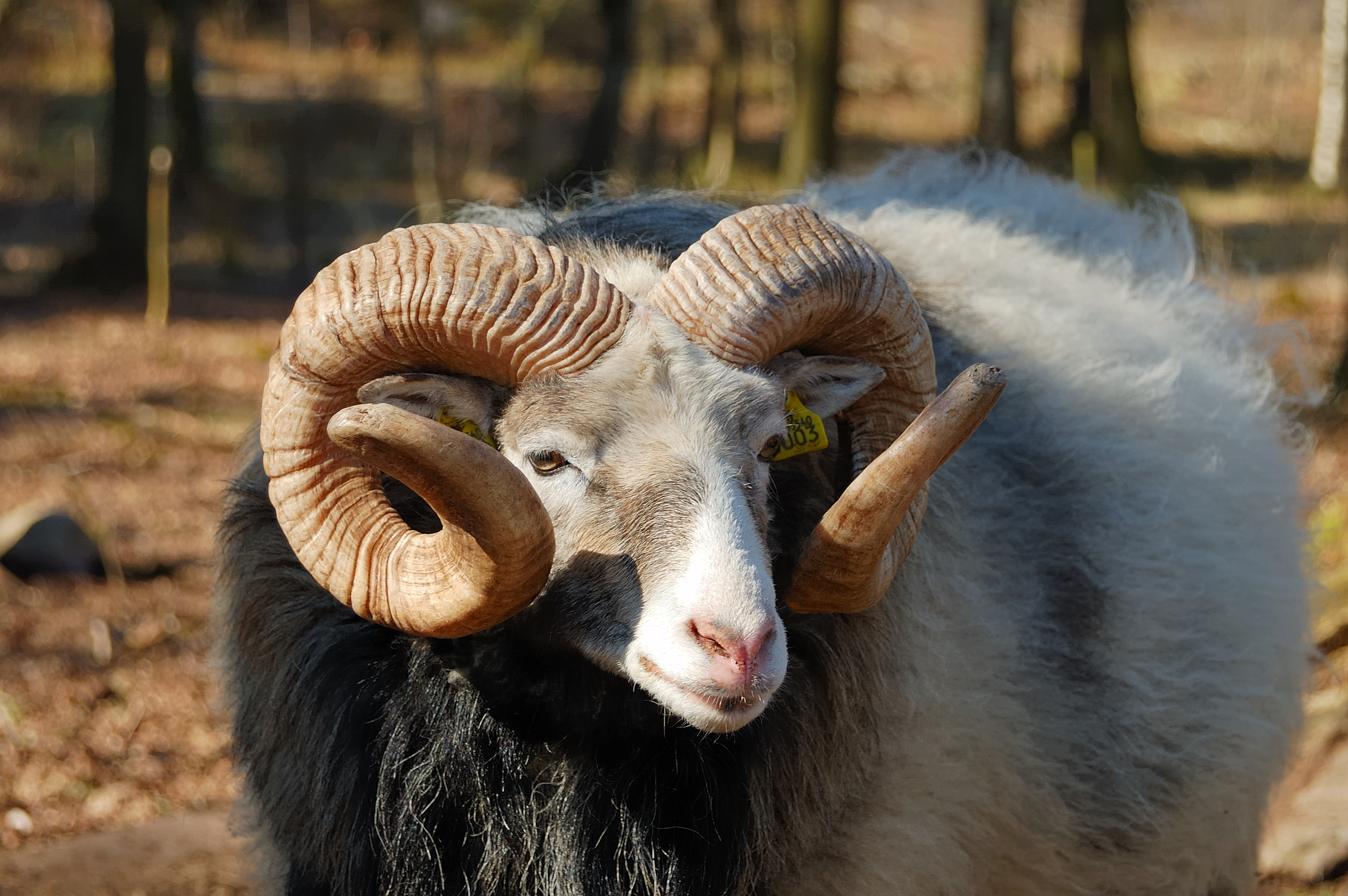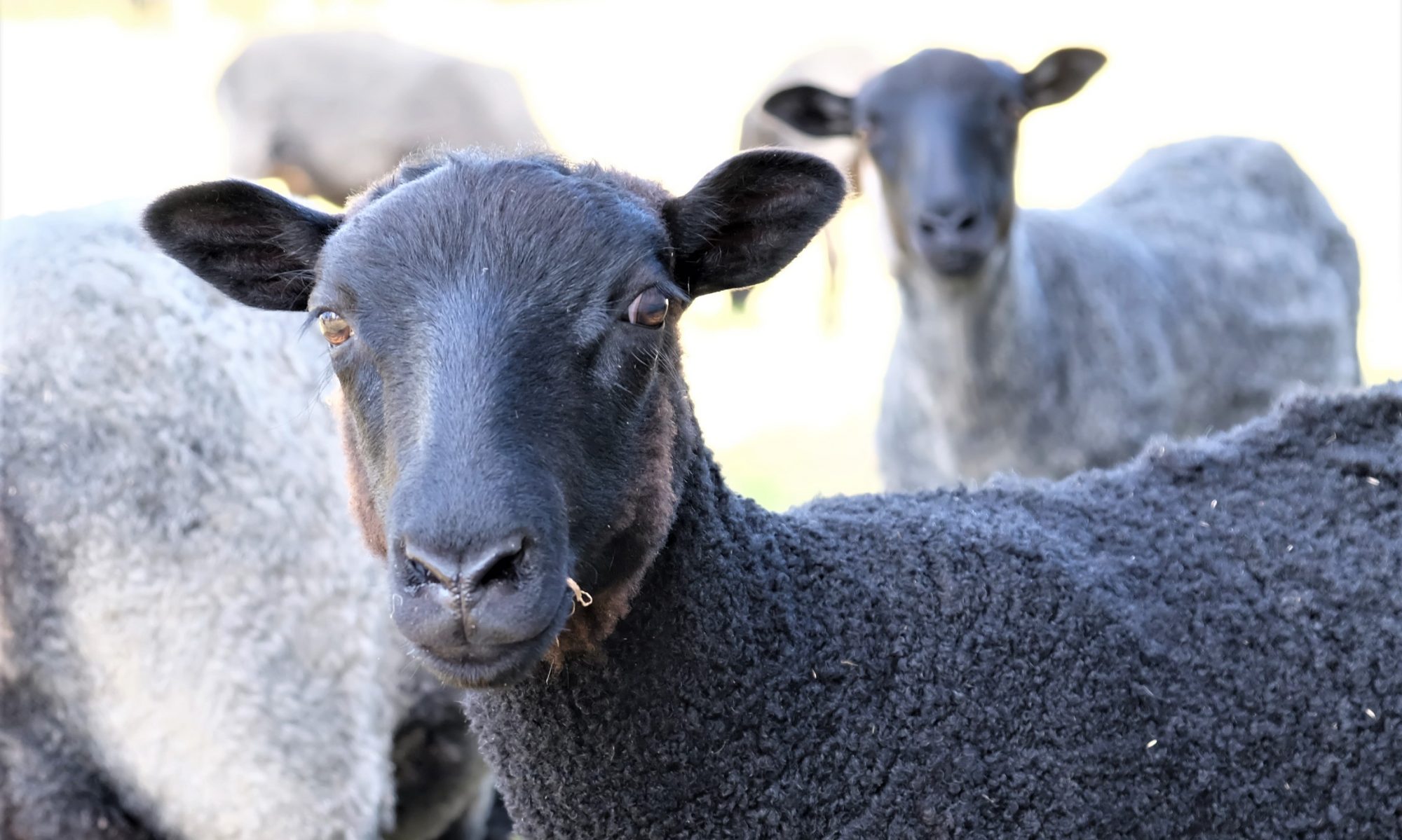
“The Gute is a landrace-based breed of domestic sheep native to the Swedish island of Gotland. The Gute is the most primitive breed native to Sweden, and is one of the Northern European short-tailed sheep. The modern Gotland breed is its direct descendant.” Wikipedia
The Gute sheep originally had horns, as seen above, and a double coat; long guard hairs and a short fluffy inner coat which grew in winter. The other interesting fact is the Gute sheep had a more robust gut system than other breeds; they could eat different types of pasture and foliage without it affecting them and they also could drink sea-water when there was no available fresh water. These sheep represented all the natural characteristics that are wanted in a breed; exceptional mothers, short tailed (no docking needed), excellent fleece for a variety of uses, and of course would eat a variety of vegetation. The only issue with the Gute was that they grew long horns; not ideal for sheep management.
On the Gotland Island in the 1920’s the shepherding community decided to cross the Gute with a polled (non -horned) sheep to preserve the original Gute genes but to breed out the horns. Thus the Gotland Pelt sheep were born from a selective breeding programme.
My interest in the original Gute sheep came about because some of the Gotland Pelt sheep of today were displaying some of the original Gute characteristics, which I find very interesting and intend to do further research into.
We had a lamb born last year that started to develop horns at about 2 months of age (a visual sign that he had strong Gute genes). He did rub these tiny horns off but they continued to grow back in his first year. He also has a different coat to the other sheep; long guard hairs and a fluffy undercoat, which is indicative of the Gute sheep.

Further on, my one year old – Bob (pictured above) is still showing signs of being a throw-back to the Gute ancestors, with a different fleece to the other sheep.
I have been talking with several spinners and weavers who are interested in this boy’s fleece, as it is showing up as having the long guard hairs which are perfect for the weaving process. The reason is that fleece from other breeds of sheep tend to break easily when spun for the weaving looms whereas the Gute offspring have the natural strong hairs which is perfect for the looms.
There is a decided difference in the fleece of the Gotland and their ancestors, the Gute.

This fleece is still on the sheep, and it is hard to see in the photo, but at the top you will see some of the longer guard hairs which are straighter and have a brown/red tint, and the second coat is curly, tight and grey.
Compare Suzie’s fleece, below, and see how even and curly it is beside the other fleece.

Some breeders do not see the value in the double-coated fleece of the ancestral Gute, and only use the soft fleece to spin for the garment industry.
With the resurgence of crafts such as the weaving of woollen rugs, blankets, outdoor clothing etc, I see a potential for the two types of fleece to be marketed. This does require more processing at shearing time however, as each fleece must be identified for its potential end use.
Please contact me for further information.
